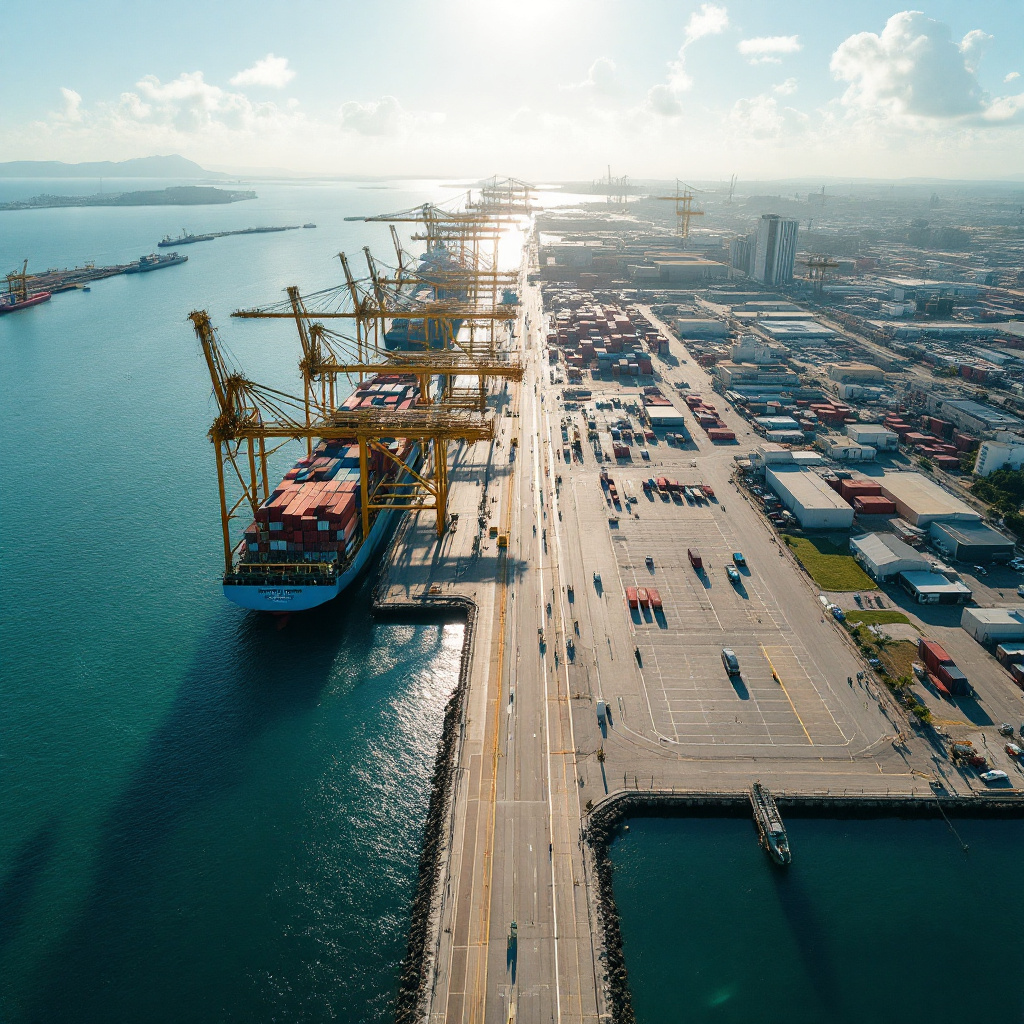Brazília, najväčšia krajina Južnej Ameriky, sa môže pochváliť dynamickým a rozmanitým hospodárstvom, ktoré sa vo veľkej miere spolieha na logistiku, ktorá spája jej rozľahlé regióny. Riadenie toku tovaru v rozľahlom brazílskom teréne, od amazonského pralesa až po priemyselné centrá v São Paule, predstavuje jedinečnú výzvu. Vďaka strategickým investíciám a inováciám však krajina mení svoje logistické problémy na príležitosti. Tento článok sa zaoberá kľúčovými výzvami a potenciálnymi príležitosťami, ktoré formujú brazílsky logistický sektor.
Kľúčové výzvy v brazílskej logistike
1. Medzery v infraštruktúre
Logistická infraštruktúra v Brazílii sa často uvádza ako hlavná prekážka hospodárskeho rastu. Medzi hlavné problémy patria:
- Podmienky na cestách: Napriek tomu, že sa na cestách prepravuje viac ako 60% nákladu v krajine, mnohé z nich sú zle udržiavané, najmä vo vidieckych oblastiach.
- Obmedzenia železničnej siete: Železničný systém Brazílie je nedostatočne rozvinutý a má obmedzené spojenie medzi hlavnými hospodárskymi regiónmi.
- Preťaženie prístavu: Prístavy ako Santos a Paranaguá sú pre vývoz veľmi dôležité, ale často trpia meškaním a neefektívnosťou.
2. Geografické výzvy
Rozloha Brazílie a jej rozmanitá krajina spôsobujú, že logistika je zložitá. Napríklad:
- Preprava tovaru cez amazonský región si vyžaduje prekonávanie náročného terénu a vodných ciest.
- Veľké vzdialenosti medzi výrobnými centrami a spotrebiteľskými trhmi zvyšujú čas prepravy a náklady.
3. Vysoké náklady
Logistické náklady v Brazílii patria k najvyšším na svete, čo je spôsobené neefektívnosťou, výdavkami na pohonné hmoty a byrokratickými prekážkami. Tieto náklady majú priamy vplyv na ceny výrobkov a znižujú konkurencieschopnosť brazílskeho tovaru na svetových trhoch.
4. Regulačná zložitosť
Regulačné prostredie v Brazílii môže byť pre poskytovateľov logistických služieb náročné. Spoločnosti sa musia orientovať:
- Viaceré úrovne zdaňovania.
- Zložité colné postupy pri dovoze a vývoze.
- Environmentálne predpisy, ktoré ovplyvňujú prepravu a skladovanie.
Príležitosti v brazílskej logistike
1. Rozvoj infraštruktúry
Brazílska vláda a súkromní investori uprednostňujú zlepšovanie infraštruktúry. Medzi hlavné iniciatívy patria:
- Modernizácia ciest a diaľnic: Projekty ako BR-163 a BR-101 majú za cieľ zlepšiť prepojenie medzi kľúčovými regiónmi.
- Rozšírenie železníc: Severojužná železnica (Ferrovia Norte-Sul) je veľký projekt, ktorého cieľom je zlepšiť možnosti železničnej nákladnej dopravy.
- Modernizácia prístavu: Investície do automatizácie a rozširovania kapacít v hlavných prístavoch znižujú preťaženie a zlepšujú efektívnosť vývozu.
2. Technologický pokrok
Digitálna transformácia spôsobuje revolúciu v logistike v Brazílii. Príklady zahŕňajú:
- Internet vecí a sledovanie: Systémy sledovania v reálnom čase zlepšujú prehľad a znižujú meškania.
- Automatizácia: Inteligentné sklady a automatizované systémy triedenia zvyšujú efektívnosť a presnosť.
- Blockchain: Táto technológia sa používa na zefektívnenie colných procesov a zlepšenie transparentnosti dodávateľského reťazca.
3. Rast elektronického obchodu
Rýchly rozvoj elektronického obchodu v Brazílii vytvára nové príležitosti pre poskytovateľov logistických služieb. S cieľom uspokojiť rastúci dopyt spoločnosti investujú do:
- Doručenie na poslednú míľu: Rozširovanie sietí dodávok v mestských a vidieckych oblastiach.
- Centrá plnenia: Zriadenie strategicky umiestnených skladov s cieľom skrátiť dodacie lehoty.
- Flexibilné riešenia: Ponuka možností, ako sú dodávky v ten istý deň alebo plánované dodávky, aby sa splnili očakávania spotrebiteľov.
4. Iniciatívy v oblasti udržateľnosti
Udržateľnosť sa stáva prioritou v brazílskej logistike. Medzi hlavné trendy patria:
- Prechod na elektrické a hybridné doručovacie vozidlá.
- Podpora multimodálnej dopravy s cieľom znížiť emisie uhlíka.
- Využívanie obnoviteľných zdrojov energie v skladových prevádzkach.
Logistika v Brazílii: Regionálne pohľady
1. Juhovýchodná Brazília
Juhovýchodný región vrátane São Paula a Ria de Janeira je priemyselnou a hospodárskou veľmocou krajiny. Logistika sa tu zameriava na:
- Podpora výrobných a vývozných činností.
- Zníženie dopravných zápch v mestských centrách prostredníctvom lepšieho plánovania a technológií.
2. Severná a Amazonská panva
Logistika v amazonskom regióne je jedinečne náročná vzhľadom na jeho odľahlú polohu a krehký ekosystém. Príležitosti spočívajú v:
- Rozvoj udržateľných metód dopravy, ako je riečna nákladná doprava.
- Využívanie technológií na optimalizáciu trás a zníženie vplyvu na životné prostredie.
3. Severovýchod a poľnohospodárstvo
Severovýchodný región je kľúčovým poľnohospodárskym centrom. Logistické úsilie sa zameriava na:
- Zlepšenie cestného a železničného spojenia s vývoznými prístavmi.
- Zlepšenie logistiky chladiarenského reťazca pre tovar podliehajúci skaze.
Logistika v Brazílii: Budúce trendy
- Multimodálna integrácia: Kombinácia cestnej, železničnej a vodnej dopravy na optimalizáciu nákladnej dopravy.
- Umelá inteligencia a veľké objemy údajov: Využitie prediktívnej analýzy na predpovedanie dopytu a optimalizáciu trasy.
- Kolaboratívna logistika: Podpora zdieľania zdrojov medzi spoločnosťami s cieľom znížiť náklady a neefektívnosť.
- Partnerstvá verejného a súkromného sektora (PPP): Zintenzívnenie spolupráce medzi vládou a súkromným sektorom pri financovaní projektov infraštruktúry.
Záver
Logistika v Brazílii je zložitý, ale sľubný sektor. Hoci problémy ako nedostatky v infraštruktúre a vysoké náklady pretrvávajú, investície krajiny do modernizácie a udržateľnosti ponúkajú významné príležitosti na rast. Prijatím technologického pokroku, zlepšením infraštruktúry a zameraním sa na regionálne silné stránky môže Brazília zvýšiť svoju logistickú efektívnosť a konkurencieschopnosť. Pre podniky pôsobiace v Brazílii alebo s Brazíliou je pochopenie a prispôsobenie sa tejto dynamike kľúčom k úspechu na tomto rozvíjajúcom sa trhu.

 Logistika v Brazílii: Výzvy a príležitosti">
Logistika v Brazílii: Výzvy a príležitosti">
